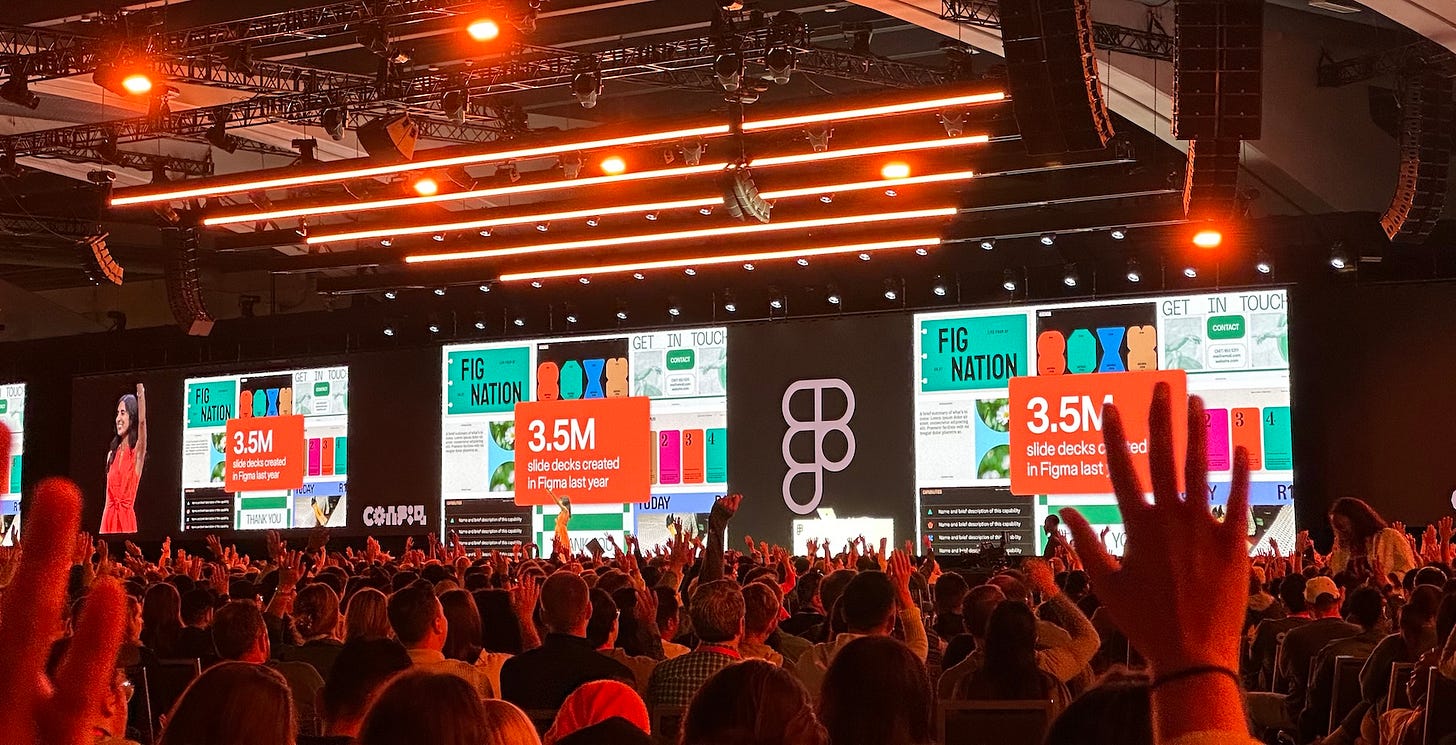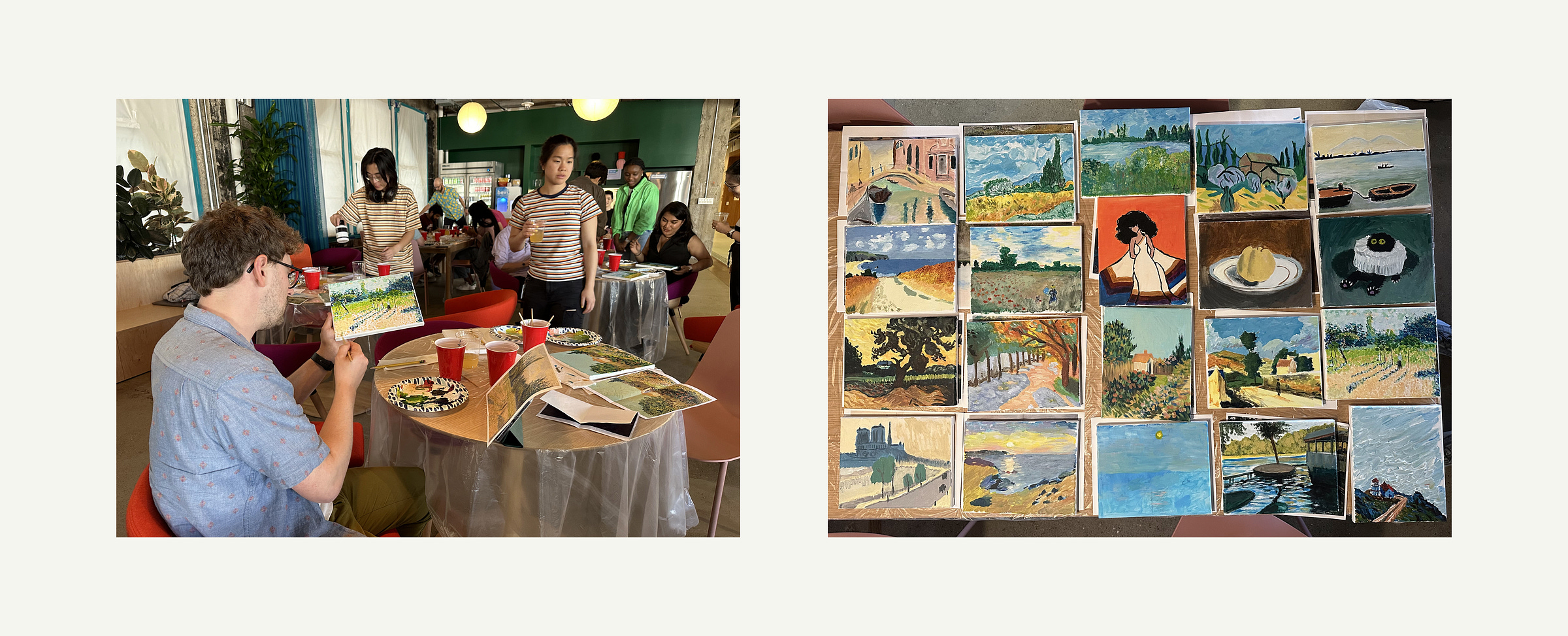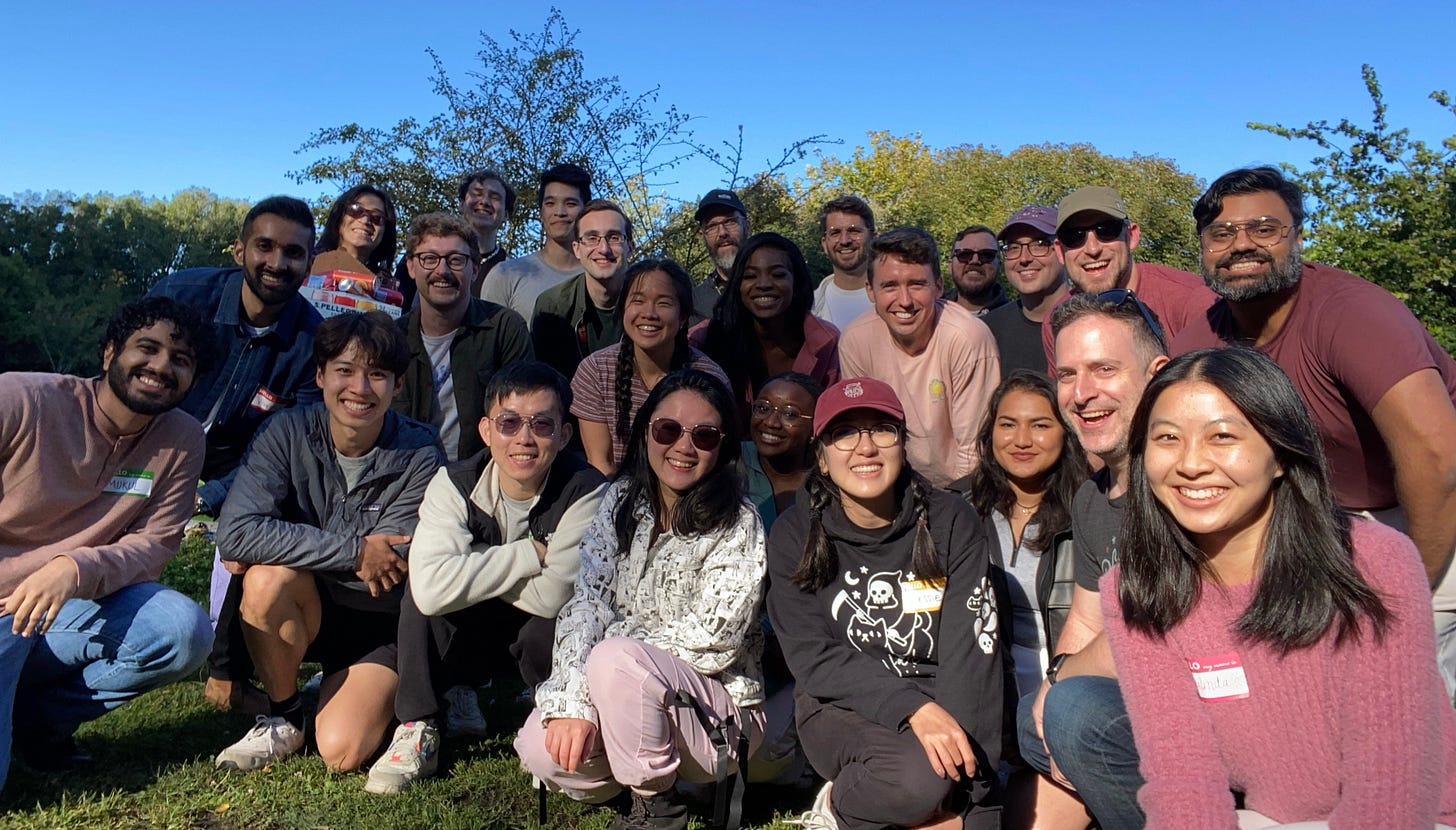What I learned at Figma Pt 3: What set the best teams apart
Thoughts on autonomy, creativity, collaboration, communication, and camaraderie which I saw Figma's most inspiring teams show daily.
One of the best things about working at Figma was getting to see how truly exceptional teams operate. After spending nearly 4 years there, it became clear what separated the good teams from the extraordinary ones. Here’s what I saw and learned:
Autonomy and Direction
Great teams need ownership. They want to feel proud of what they’ve created and know they’re responsible for its success. But ownership alone isn’t enough. Teams also need direction.
The best approach balances these two needs, giving teams enough autonomy to feel empowered, while also providing enough clarity and guidance so they're not lost. Teams should either shape their own direction and get leadership buy-in, or be guided by clear, top-down objectives while retaining significant freedom to explore.
The Figma Slides and FigJam team, in particular, really nailed this balance. Mihika, their PM, had an incredible knack for shaping and refining a vision, securing support from leadership, absorbing and selectively acting on feedback. And critically knowing when to ignore it! This team felt like a genuine internal startup: driven, ambitious, and deeply invested in their success. The craft and quality of their product spoke volumes about the autonomy and direction they carved out for themselves. And the launch (shown below) went down so, so well because of this!
If you’re a PM, creating this kind of environment should be an extremely high priority. Fight for your team, champion their ideas, and rally both your colleagues and leadership around shared goals. I've done this with varying degrees of success, and when it clicks, it's truly incredible.
Maker Mindset
Almost every team at Figma embodied the maker mindset, but some took it to an entirely different level. Early FigJam is a standout example. The team wasn’t just skilled; they genuinely loved their work. They cared deeply about every detail, constantly pushed creative boundaries, and infused their product with joy, fun, and hidden gems.
Unfortunately, many tech teams in the industry are discouraged from truly exploring their creativity due to rigid OKR style priorities or leadership constraints. But when teams carve out their own creative spaces, hire passionate individuals (rather than those simply chasing paycheques and vesting periods), and leadership actively supports playfulness (one of Figma’s core values) the results are extraordinary.
For me, the maker mindset is a powerful combination of craft, curiosity, and genuine passion. The best product teams don’t just have this mindset—they overflow with it. It isn’t something you can simply switch on, but by hiring thoughtfully, encouraging curiosity, and intentionally creating space for experimentation, you foster the conditions for incredible creativity.
A great example of this is how during an offsite we would often do things like painting together — and just check out the how wildly impressive the work from the Mobile Engineers, Designers, and PMs!
Ego-Free Collaboration
Before joining Figma, I experienced far too many teams riddled with people playing politics, jockeying for credit, and optimising for performance reviews. Thankfully, that culture was refreshingly rare at Figma.
Instead, most folks genuinely enjoyed collaborating, celebrated each other's wins, and championed each other’s successes. Whether it was PMs ensuring designers presented their own work to leadership or team leads publicly praising IC engineers for fixing gnarly bugs, ego-free collaboration was consistently modelled.
The notifications team, where I spent some time, embodied this beautifully. Much of our work flew under the radar, so we made it a priority to publicly celebrate wins, pushing credit towards the designers and engineers responsible. Building a culture where everyone genuinely wants their colleagues to succeed more than themselves always leads to greater overall success. And we definitely saw this!
Flowing Communication
Effective communication is the backbone of any successful team, and as companies grow, keeping it clear and inclusive becomes harder. On the Collaboration team, my last team at Figma, we tackled many different surfaces and features simultaneously (comments, notifications, file browser, and more). Chaos was inevitable, but clear, flowing communication kept us effective.
Prioritising public channels over direct messages, relying heavily on async updates, and involving all stakeholders—engineers in design crits, designers in early brainstorming sessions, and keeping managers in the loop—transformed chaos into productive, collaborative energy. It might have looked like a messy scratch kitchen from the outside, but internally, everyone knew exactly what was happening and it flowed.
My key advice: involve more people earlier. Engineers should be ideating alongside designers, marketing helping write PRDs, and leadership getting receive frequent tl;dr style updates, not just polished decks months into a project. This approach is transformative, and I can’t recommend it enough.
Playful Camaraderie
Finally, the cornerstone of high-performing teams at Figma was playful camaraderie. Unity underpins every other success factor. Without genuine friendship, ego-free collaboration, clear communication, and creative exploration all suffer.
Some of the best teams at Figma all shared a profound sense of unity. They laughed together, supported each other, and genuinely enjoyed their daily interactions. Stress and urgency has its place for quick wins, but joy and camaraderie drive repeated innovative thinking and polished outcomes.
Creating playful camaraderie doesn’t happen by accident. It’s intentional. You need to hire people who are genuinely good, who care about their work and each other, and who find joy in being together. Teams focused solely on OKRs or performance reviews might achieve short-term success, but lasting, extraordinary results stem from genuine relationships and playful interactions.
Hands down the team that showed this the most were the Native teams at Figma. I’ve never been a part of such a united team, that went through so many challenges, but always had each others backs!
If you haven’t experienced a team like this yet, I sincerely hope you will. It’s genuinely special. You can help actively foster this where you are by prioritising relationships, injecting lightness and fun, celebrating shared wins, and just jamming on stuff together. Success will inevitably follow.
At Figma, seeing these principles in action was incredibly inspiring. I learnt so much whilst there, but reflecting on it now makes me realise how much more I could have learnt as well. When these elements align, the results speak for themselves, and I’m excited to continue investing in these areas in future teams!






